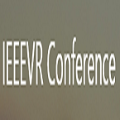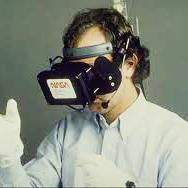Immersive virtual reality (VR) emerges as a promising research and clinical tool. However, several studies suggest that VR induced adverse symptoms and effects (VRISE) may undermine the health and safety standards, and the reliability of the scientific results. In the current literature review, the technical reasons for the adverse symptomatology are investigated to provide suggestions and technological knowledge for the implementation of VR head-mounted display (HMD) systems in cognitive neuroscience. The technological systematic literature indicated features pertinent to display, sound, motion tracking, navigation, ergonomic interactions, user experience, and computer hardware that should be considered by the researchers. Subsequently, a meta-analysis of 44 neuroscientific or neuropsychological studies involving VR HMD systems was performed. The meta-analysis of the VR studies demonstrated that new generation HMDs induced significantly less VRISE and marginally fewer dropouts.Importantly, the commercial versions of the new generation HMDs with ergonomic interactions had zero incidents of adverse symptomatology and dropouts. HMDs equivalent to or greater than the commercial versions of contemporary HMDs accompanied with ergonomic interactions are suitable for implementation in cognitive neuroscience. In conclusion, researchers technological competency, along with meticulous methods and reports pertinent to software, hardware, and VRISE, are paramount to ensure the health and safety standards and the reliability of neuroscientific results.
翻译:然而,若干研究表明,VR诱发的不良症状和影响可能会损害健康和安全标准以及科学结果的可靠性。在目前的文献审查中,对不良症状学的技术原因进行了调查,以便为在认知神经科学中实施VR头部挂起的显示系统提供建议和技术知识。技术系统文献表明,显示、声音、运动跟踪、导航、人类工程学互动、用户经验和计算机硬件的特征与研究人员应考虑的显示、声音、运动跟踪、导航、人类工程学互动、用户经验和计算机硬件有关。随后,对44项涉及VRHMD系统的神经科学或神经心理学研究进行了元分析。对VRMD研究的元分析表明,新一代HMD的引致VRIS头部挂起的显示系统(HMD)系统的建议和技术知识为在认知神经神经科学中实施系统(HMDS)系统(HMD)系统(HMD系统) 提供了大量建议和技术知识知识。新一代人文科学显示,与人类工程学相互作用的不良症状和辍学事件没有发生。与当代HMD系统的商业版本相同或更大程度。在与神经科学、精确性研究、安全性、安全性研究、安全性、安全性、安全性、安全性、安全性、安全性与硬性报告是合适的。





